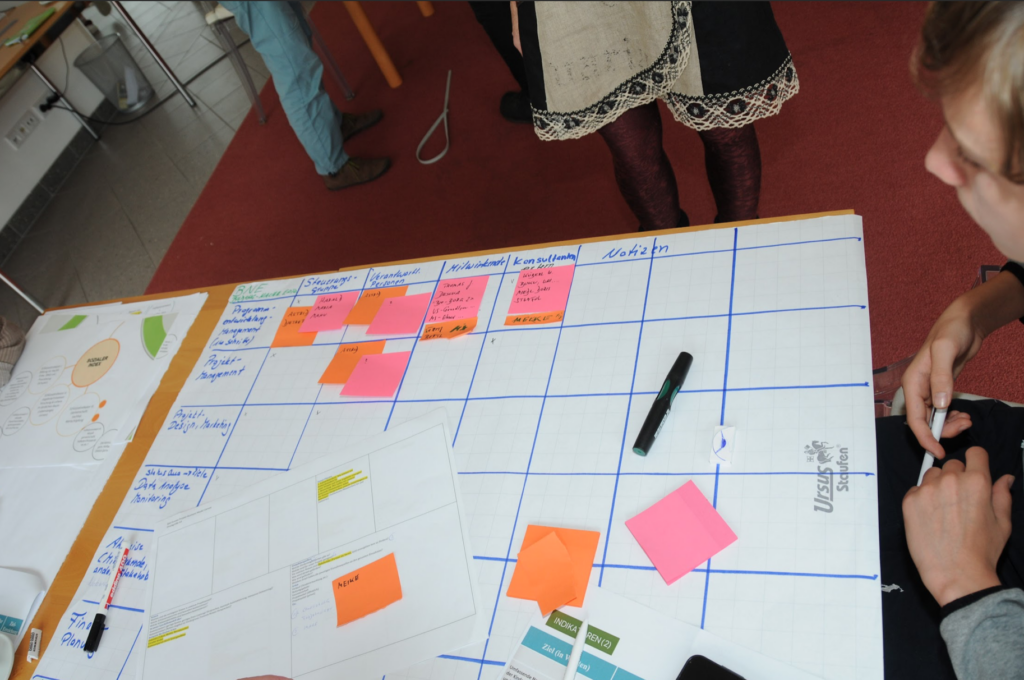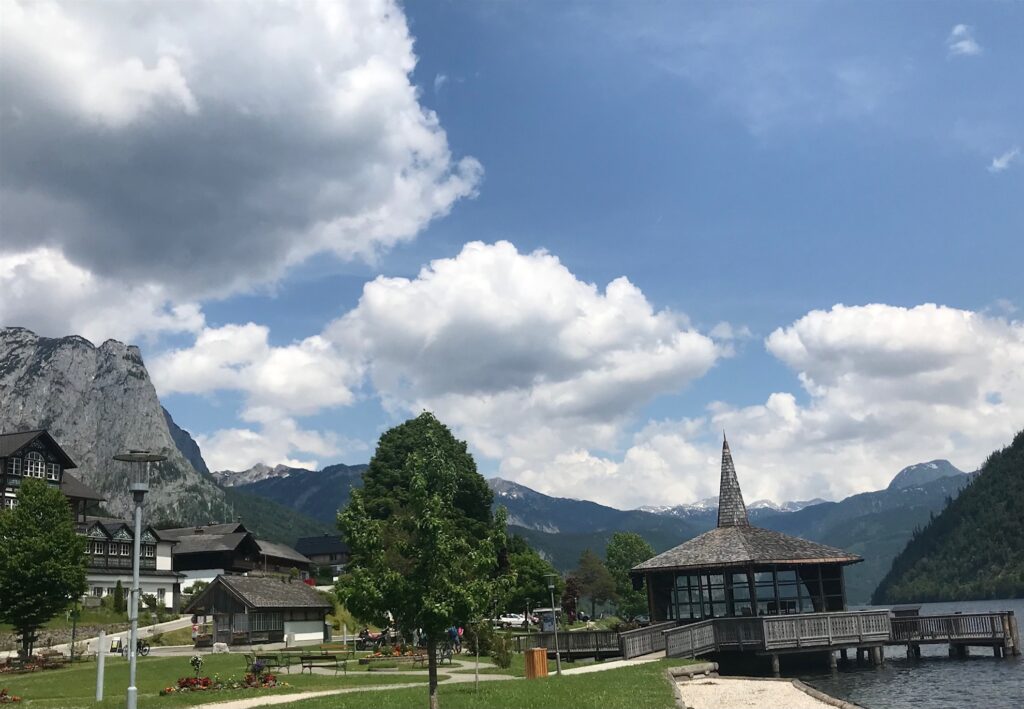
On 25 February 2023, the first workshop of our process for a good life in the Dachstein – Salzkammergut – Totes Gebirge region took place in Bad Aussee. The kick-off on the evening before, which we document here, was attended by 200 participants, 25 of whom came to the Kommhaus on Saturday from 9 am to 4 pm.
After a welcome by the host Astrid Schoiswohl, Diether Ribitsch from the Biospährenparkinitiative and Fritz Hinterberger from the University of Applied Arts and the Club of Rome as project leader, Ulrike Payerhofer, Max Muhr and Ronja Janu from the Projektwerkstatt der Angewandte led through the day. Right at the beginning, they asked the participants, aged 15 to 70, to write a short text about the future they wanted for the region and to keep it to themselves throughout the day – in a sense as a guiding star for the group work that followed.
Ulrike Payerhofer then presented the topic of “collages” from art history (with examples from Picasso to today) as a simultaneous look back and forward: something new is created from old, existing things. On the four tables there was already prepared material as well as scissors, glue and everything else you need for a collage; in addition, we had asked the participants to bring magazines and brochures with them, from which they could then cut out their pictures of the future and put them together again.
When the four groups then presented their results in the afternoon, some of them gave real performances on “themes”/”areas of life” such as
- Tradition/building culture
- Working together/together
- Intact nature/beautiful landscape
- Soil/Agriculture/Food(s-Sovereignty)
- Energy efficiency and self-sufficiency
- Space/Mobility
- Handicraft
- Jobs
- Affordability and
- Footprint
emerged. Again and again, more general desirable concepts were discussed, such as air and water, peace, freedom and spirituality, but also a “new wind” that helps to overcome fear (of the future) and a miracle that might be necessary for this.
A surprise then came: the posters hung up in the room turned out to be postcards on their reverse side, which the participants could then write from the future to people of their choice. We brought printed copies of these to the second workshop. The first texts that were written at the end of the first workshop were very touching.

The only concrete suggestion of the day was a “pedestrian zone on the main square”. But we are not there yet. The aim of the entire series of workshops, which will run until the summer, is to develop from general images and wishes about the future of each and every individual, first common and later also measurable goals and from these concrete steps that everyone would like to take on the way to a “good life for all”. A biosphere park is one possible option that requires concrete joint steps. But there are certainly others that the participants can strive for together in order to make a good life in the region possible for all in the face of the climate crisis.
The second workshop on 15 April will focus on HOW. What does it look like when we get going? The knowledge of the individual working groups will now be brought together. In the process, a common language will emerge, a common understanding of the dynamics that need to be taken into account. The result is an imagined systemic picture of the future that also shows how the actors (can) work together. This should then also deal with aspects that have so far only been mentioned implicitly, such as economy and tourism, social affairs and education.



One thought on “From the past into the future”